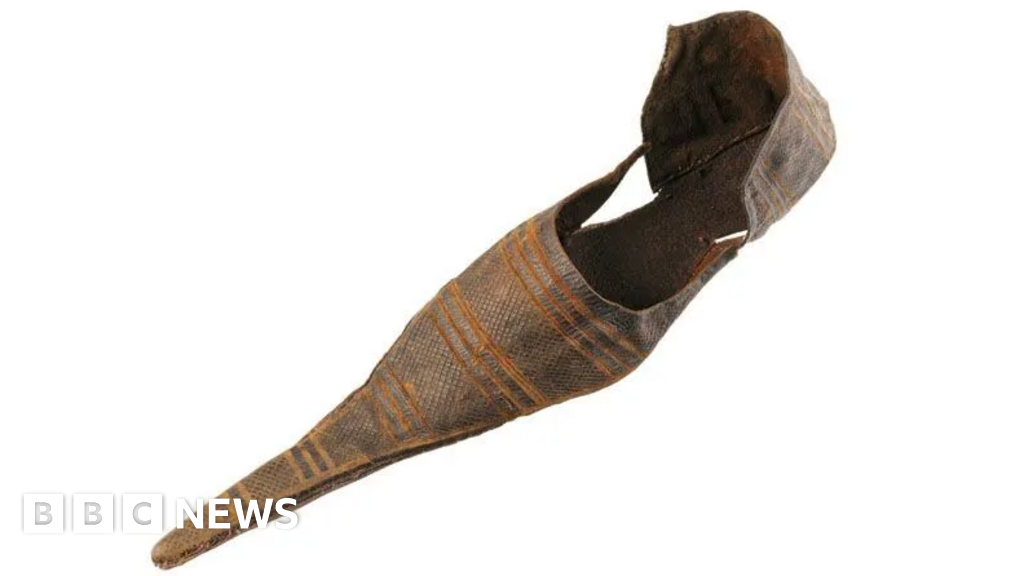
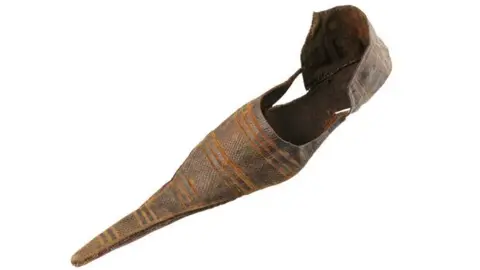 London Museum
London MuseumPerhaps one of the oddest moral panics – a fear that some evil threatens the wellbeing of society – was one that arose in medieval times.
Fashionable pointy-toed shoes called poulaines were alleged to promote sexual deviancy and, as a resulting sanction from God, were blamed for bringing about the plague.
The long points were kept erect by being stuffed with moss or straw and could be made out of fancy decorative fabrics or sturdier leather. There were even armoured versions for use in battle.
In a double whammy to the pious, the shoes were seen as both demonic and vain and were eventually banned from London.
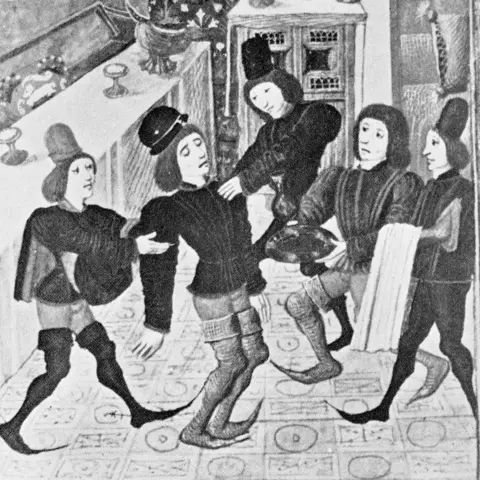 Getty Images
Getty ImagesOne Benedictine monk became so worked up about the issue he clearly dedicated significant thought and time to it.
In his history of the Church, written in about 1100, Orderic Vitalis railed against the dress of Norman lords, with particular vitriol aimed at long-toed shoes.
“A debauched fellow named Robert was the first, about the time of William Rufus, who introduced the practice of filling the long points of the shoes with tow (the fibre of flax, hemp or jute) and of turning them up like a ram’s horn.
“This absurd fashion was speedily adopted by a great number of the nobility as a proud distinction and sign of merit.
“Our wanton youths are sunk in effeminacy.”
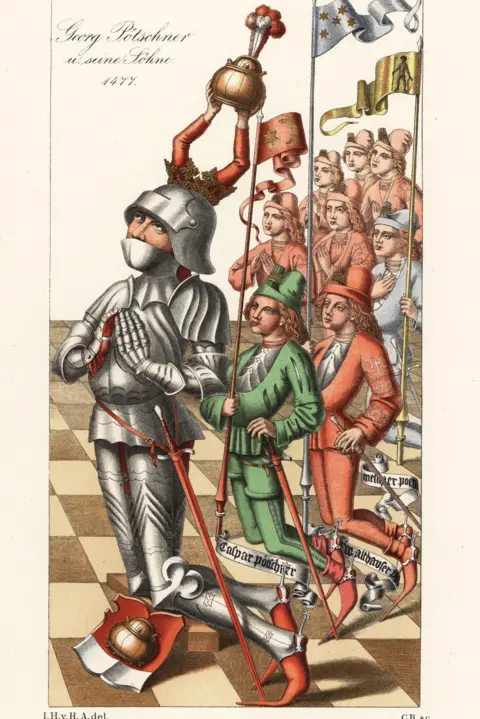 Getty Images
Getty ImagesHe also lambasted glove-wearing, centre partings and long tunics – but the shoes seem to have been the true bee in his (manly) bonnet: “They insert their toes in things like serpents’ tails which present to view the shape of scorpions…
“They give themselves up to sodomitic filth”, with “long luxurious locks like women,” and “over-tight shirts and tunics” he observed (slightly lasciviously).
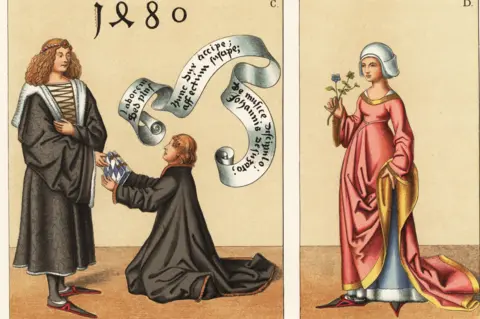 Getty Images
Getty ImagesPoulaines, also called cracows – after the Polish city Krakow, where they are thought to have originated – were pointed footwear worn predominantly by wealthy men.
The cumbersome shoes advertised the wearer’s leisure and emphasised their inability to partake in physical labour.
The London Museum has examples with toe points longer than 10cm, while a monk at Evesham Abbey claimed in 1394 that he had seen people wear them “half a yard (45cm) in length”.
Thus, he alleged, “it was necessary for them to be tied to the shin with chains of silver” to enable walking.
In 1348, the Black Death arrived in London, a plague killing approximately 40,000 people – nearly half of the city’s population.
The church had given the cause of the pestilence to be the “impropriety of the behaviour of men” and poulaines symbolised that behaviour.
From talus to phallus
The long point was seen as phallic, and the cut around the ankle was saucily low, elongating the leg and displaying the talus bone, often clad in colourful hose to turn the heads of admirers.
According to the London Museum, young men would “stand on street corners wiggling their shoes suggestively” at people walking by.
If that shoe-wiggler had bells sewn to the ends of the points, it indicated that the wearer was available for sexual frolics.
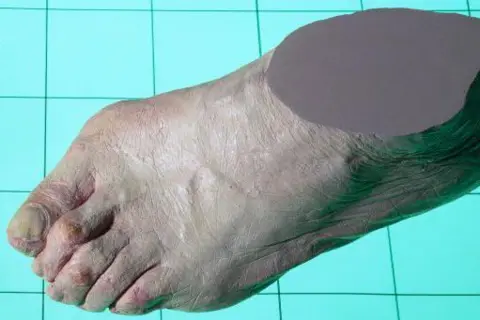 Getty Images
Getty Images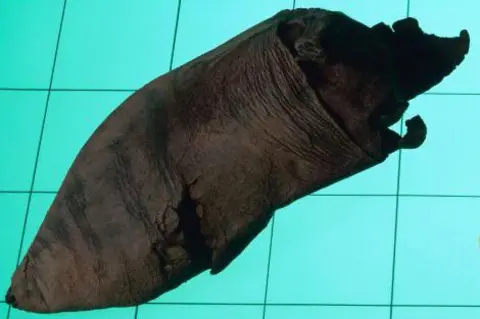 Getty Images
Getty ImagesAside from the sinful association of fleshly pleasures, clerics were concerned that the long toe-pieces prevented people from kneeling in the approved obeisant manner.
This restriction of the ability to properly pray led to religious leaders calling them “Satan’s claws”, and in 1215 Pope Innocent III banned priests from wearing them – along with green or red clothes, ornamented buckles or undone cloaks.
In 1362 Pope Urban V tried to ban them completely – and in 1463 the UK Parliament under Edward IV passed a sumptuary law to stop anyone lower in rank than lord to wear shoes longer than two inches in the points.
People found to be of too low a rank to have an extremely long point could be fined, and “any cordwainer or cobbler within the city of London or within three miles of any part of the same city” was banned from supplying or making them for people of insufficient nobility.
Fashions are, by nature, of a particular time – and by 1475 the trend of the poulaine was largely over.
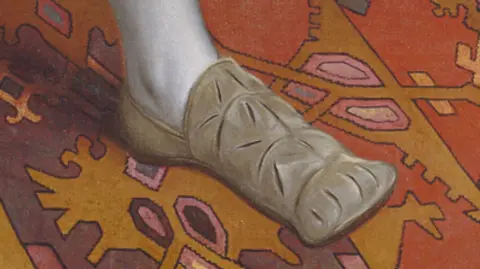 Getty Images
Getty ImagesIn a complete change from the very pointed toe favoured at the end of the 15th Century, Henry VIII liked a broad square shoe.
According to the V&A Museum, the wide shoes “echoed the line of fashionable dress for men, who wore broad-shouldered padded doublets”.
And so European footwear pivoted into the wide, box-toed shoes – and obviously, the public responded by aping the regal style with a flourish.
The width became exaggerated during Henry’s reign – with some soles being more than 17cm (nearly 7in) wide.
Faced with a new class of rich merchants with the wealth to buy clothes and shoes above their social status, and always keen to keep the gap between royalty and other classes, Henry updated the earlier sumptuary laws in a 1509 act governing the wearing of costly apparel.
One of the apparel acts restricted the width of these blocky shoes – only men of status were allowed to wear shoes of certain width.
Four later revisions of the Acts of Apparel continued to prevent the common people from emulating the court.
The king is even said to have had men who would go around trying to catch people, measuring the width of their toes.
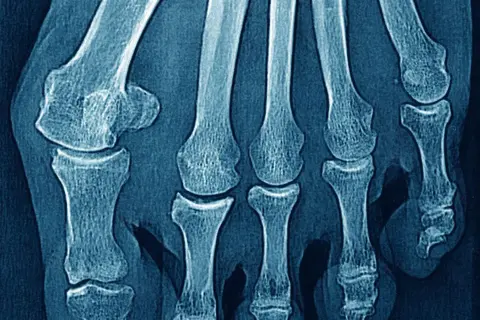 Getty Images
Getty ImagesPoulaines were, unsurprisingly, not great for feet.
A study in 2005 of medieval remains found hallux valgus – a small deformity of the big toe with a bony protrusion at its base, more commonly known as bunions – exclusively in corpses from the poulaine era.
And a 2021 study found that those who lived in more fashionable neighbourhoods during the height of the poulaine fashion were far more likely to have bunions, misshapen feet, and bone fractures in the arms associated with injury from falling.
It must have been a relief for the court of Henry VIII, secure in their square-toed knowledge that they wouldn’t trip over on their way to be executed.




